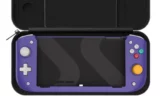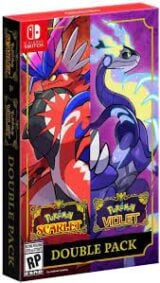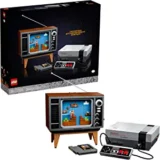Star Fox and F-Zero’s Takaya Imamura discusses leaving Nintendo and the future
The 30-year Nintendo veteran speaks to VGC about his new manga, and an illustrious career

You might not have heard of Takaya Imamura, but if you’re a fan of video games, you almost certainly know his work.
In a glistening 30-year career at Nintendo, the artist and designer was integral to some of its most iconic games, including F-Zero, Star Fox and the Legend of Zelda: Majora’s Mask, creating beloved characters such as Fox McCloud and Captain Falcon, and designing large chunks of F-Zero X and Star Fox 64.
Imamura joined Nintendo in 1989, before the release of the Super Nintendo. Despite having no prior game development experience and aspiring to become a manga artist, he impressed creative mastermind Shigeru Miyamoto in a job interview with his artwork and knowledge of film.
The first game he worked on, F-Zero, would eventually define his Nintendo career, alongside his other SNES hit Star Fox. However, he also made significant contributions to the Legend of Zelda series, creating bosses for A Link to the Past and art directing one of the series’ most visually iconic games, Majora’s Mask. He also created the fan-favourite character Tingle for The Wind Waker, before being pulled onto other projects.
In the 2000s, Imamura became a producer for Nintendo’s external collaborations, including F-Zero GX (developed by Sega), Star Fox Adventures (by Rare) and Star Fox Assault (developed by Namco).
Eventually, he went on to direct many smaller, original titles – a rare luxury for veteran Nintendo creators – such as 3DS’s Steel Diver (2011) and Tank Trooper (2016), but it’s still his SNES hits fans ask about the most – despite the fact Nintendo hasn’t supported them with new releases much over the past two decades.
Today, Imamura is ‘retired’. We use that term loosely, because to fans, it will probably seem like since he left Nintendo in 2021, he’s become more active than ever.

“I’ve tried to plan my life with each decade, but I had a lot of thoughts when I turned 50,” he told VGC, sat outside a bustling Kyoto station café earlier this year. “I had this vague idea that I would retire from Nintendo before I turned 60, so I could try something new.
Imamura's key credits
- F-Zero (1990) – Graphic designer
- Zelda: ALTTP (1991) – Object Designer
- Star Fox (1993) – Graphic Designer
- Stunt Race FX (1994) – CG Designer
- Star Fox 2 (1995) – Special Thanks
- Star Fox 64 (1997) – Art Director
- F-Zero X (1998) – Chief Designer
- Zelda: Majora’s Mask (2000) – Art Director
- Star Fox: Adventures (2002) – Supervisor
- F-Zero GX (2003) – Supervisor
- F-Zero: GP Legend (2003) – Supervisor
- F-Zero: Climax (2004) – Supervisor
- Star Fox: Assault (2006) – Producer
- Star Fox: Command (2006) – Producer
- Steel Diver (2011) – Director
- Star Fox 64 3D (2011) – Supervisor
- Star Fox Zero (2016) – Supervisor
- Tank Troopers (2016) – Director
“When I finally retired, a French game researcher reached out to ask about my plans, and I said I had started creating a manga. I finished it within a year, and he really wanted to help me publish it in France. Things moved very smoothly after that.
“At the same time, I was teaching at the International Professional University of Technology in Osaka. I secretly created ‘Omega 6’ during my break time in the research room! University teachers have their own research room, so nobody will find that out,” he laughed.
‘Omega 6’, a manga which stars sci-fi pilots exploring the galaxy in Imamura’s trademark retro-future style, is out now in France and being translated to English as we speak. Perhaps more exciting for fans are plans to turn Omega 6 into a Nintendo Switch graphic adventure, with a release date penned for later this year.
But of course, we’re not just here to discuss the future. The opportunity to meet with Imamura is a rare glimpse into the inner workings of one of the most secretive companies in the world. As the man himself summarises, his career was “32 years of working under Shigeru Miyamoto”, arguably the most legendary creator in the entire games industry.
“Within the company [Miyamoto is] still seen as very kind. He’s only strict with the team he’s working with,” Imamura says of his former boss. “He has to be strict to make the games turn out so well. Even though I and other people think about games a lot, he’s on another level. He thinks about games more than any other person at the company.” He adds: “Even today, I feel that Miyamoto-san’s presence motivates Nintendo developers.”
Read on for our full exchange with Takaya Imamura, translated on site by Ran Niboshi. Omega 6 is available to buy now in French.
Hello Imamura-san! Please tell us about some of the major series you have worked on.
F-Zero was the first title I worked on, and I am very attached to it. Star Fox is the series I put my heart and soul into, and I am very attached to its game design and characters. As for the Zelda series, I have always loved The Legend of Zelda, so it was a dream come true for me to be involved!
Your new venture, the manga Omega 6, was recently released in France. What can you tell us about that experience?
The reason I started drawing manga is because my dad was a manga artist. I joined Nintendo because I was a fan of games, but I’ve always wanted to be a manga artist since I was a child. When I turned 55-years-old, I realised I actually didn’t have that much time left to achieve what I wanted to during my life, so I decided to quit Nintendo and do it. You can work at Nintendo until you turn 65, but in reality, that doesn’t leave much time to try something new.
I’ve tried to plan my life with each decade, but I had a lot of thoughts when I turned 50. I had this vague idea that I would retire from Nintendo before I turned 60, so I could try something new. When I finally retired, a French game researcher reached out to ask about my plans, and I said I had started creating a manga. I finished it within a year, and he really wanted to help me publish it in France. Things moved very smoothly after that.
There are two different styles in France when it comes to manga – a French style, and a Japanese style. In Japanese manga you read from the opposite direction to French, from right to left, and that has proven to be very popular in the country.
“I’ve tried to plan my life with each decade, but I had a lot of thoughts when I turned 50. I had this vague idea that I would retire from Nintendo before I turned 60, so I could try something new.”
What lessons did you learn from releasing the manga? Are there plans to release it outside of France?
This was my first time publishing a manga. Thankfully, the researcher I mentioned is the head of a publisher, so everything depends on him [regarding international plans]. The localisation part was really hard. They sent over a French layout with the text already there, and that was tricky because I had to fit my artwork around it. And that was for over 200 pages!
At the same time, I was teaching at the International Professional University of Technology in Osaka. I secretly created Omega 6 during my break time in the research room! University teachers have their own research room, so nobody will find that out (laughs).
Until we publish it…
(Laughs) You can publish that!
Omega 6 is drawn in a retro sci-fi style, like the games you’re most famous for. Should we read into any similarities to F-Zero and Star Fox? Or is that just a genre you’re passionate about?
Story-wise, it’s different, but the style I draw, which is like a ‘retro future’, is similar. That’s the only thing I can draw – that’s my style – so I didn’t change it! I’ve always wanted to draw manga with this style, so I just applied it from my past games.

You also have an Omega 6 video game in development. What can you tell us about it?
I’m really thankful to the people who still wanted to work with me even after I retired from Nintendo. A company known for old-style adventure games approached me and said they’d like to make a game in 16-bit style, based on my Omega 6 manga. They’re comprised of people in their 40s, so they naturally have strong memories of Super Famicom and Star Fox.
It sounded like a good partnership, so I decided to do it and draw all the graphics for the game, which I do entirely on my iPad. The developer is a small Japanese company called Happy Meal. There are just four people in the company, if you include myself, as I’m also acting as a designer.
So despite retiring from Nintendo two years ago, to the public, it might seem that you’re more active than ever.
Exactly. At Nintendo, I couldn’t make what I wanted this quickly because I had to go through a long process to get something approved.
Game development veterans leaving their employers to create their own startups has become very common in the West, and the trend appears to be growing in Japan. Did you ask other experienced developers who had left their companies for advice?
There aren’t very many people who retire from Nintendo and still make games, but I do keep in touch with the few who did stay in the games industry.
When I was at Nintendo, I knew lots of people who worked at companies outside of Nintendo, but I always wanted to be more free and able to help other people. That said, I didn’t want to move to another game company, so when the International Professional University of Technology in Osaka offered me a job, I felt like I couldn’t miss that opportunity. I was really happy to be offered the job.
“There aren’t very many people who retire from Nintendo and still make games, but I do keep in touch with the few who did stay in the games industry.”
What was your last day at Nintendo like?
Because I left Nintendo during the pandemic, nobody was in the office when I cleared my desk, which was quite easy! I was expecting everybody to send me off, but I was alone collecting my things. I only talked to those who worked for the personnel department.
I knew that I was going to leave a year before I actually retired, because the university offered me a job. So I had time to prepare myself to leave the company. I often dream about visiting the Nintendo office now that I’m retired. I hope they’d let me in! I was there for 30 years, and I still dream about it… it’s difficult to cut off those feelings.
I finally met [Shigeru] Miyamoto-san in March, and he was really happy for me. I also gave him my manga.
Is it quite rare for experienced developers such as yourself to leave NCL?
Yes, it’s quite rare.
Do people at your university treat you like a bit of a celebrity?
They look after me really well! It’s important to attract more students to the university, so we do talk often about ‘Imamura from Nintendo who can teach you all about games!’ And that’s how we attract students. So the university has told me I can do whatever I want! As long as I teach students.

Arguably your most famous projects, Star Fox 64 and F-Zero X, credit you as art director, but you actually contributed design as well. Did you find it satisfying be able to work in smaller teams and cover multiple disciplines?
I used to like it. For example, on Legend of Zelda: A Link to the Past, the director would tell me, ‘please make this kind of boss’, and then you’d work with a programmer to create it. So we had a clear direction: the director would come up with the idea for a boss and also the balance within the game. So along with the programmer, I’d have to do everything in the creation of the boss, and I learnt a lot from that experience.
These days, it’s so individual: ‘you are the programmer’, ‘you are the animator’… there aren’t many opportunities to try different things. Back then, creating games was a lot more collaborative across different areas.
Obviously, in bigger companies, there are several different development teams, and while some teams get to regularly release new games, others may not for whatever reason. Did you become frustrated that there was a long stretch of time where you didn’t get to release a game?
On several occasions, projects that had been worked on for a long time have been cancelled. This is a common occurrence in other companies.
Nintendo always said they could only make new instalments of certain series if they could only come up with a new idea. Why has that been the case with F-Zero and Star Fox, whereas other series like Kirby or Fire Emblem see regular releases, which are quite iterative?
I think it’s a question of sales.
“On several occasions, projects that had been worked on for a long time have been cancelled. This is a common occurrence in other companies.”
Is it the case that because F-Zero isn’t a Miyamoto-led project, it gets less love from Nintendo?
Miyamoto-san is always thinking about Nintendo as a whole, so I think he didn’t have much time to think about F-Zero.
That must be frustrating.
The game ideas for F-Zero and Star Fox were created by Miyamoto-san. I just helped to create that world.
So why do you think F-Zero gets less attention from the company than Star Fox does? There hasn’t been a new F-Zero game for almost 20 years now.
I think it’s because Mario Kart is Nintendo’s most popular racing game, and a new F-Zero would cost a fortune. My impression is that Miyamoto-san is very affectionate about Star Fox.
In contrast, the Metroid series is currently enjoying something of a renaissance, with the series being outsourced to Western studios. Do you think a similar setup may be necessary to bring back F-Zero?
It is easy to revive IPs, but careful consideration is needed to produce them as something that really satisfies customers. I believe that the overseas studios currently producing Metroid are also the result of careful selection. Personally, I love the old 2D-style Metroid.

Considering the cost, lots of people couldn’t work on franchises like F-Zero because they had more important games coming out. It’s difficult to manage everything with just Nintendo’s internal developers. That said, there are tons of people who want to make Nintendo titles, so if Nintendo has the confidence that they can make Nintendo games, they should pass it on to those people. Just look at how Donkey Kong Country turned out!
PlatinumGames recently said they would like to release Star Fox Zero on Switch. Is that something you would like to see?
I actually retweeted that news at the time! It could be a little difficult adjusting the controls from Wii U, but I hope they can do it, yes.
It’s very rare the media gets a chance to speak with somebody who’s been in the inner sanctum of Nintendo’s star team. Can you give us a sense of how powerful Mr. Miyamoto is within the company?
As you know, he is still a charismatic figure at Nintendo. But Nintendo is slowly changing. I think it will continue to change slowly, mixing new things with what Miyamoto-san has created.
He sometimes scolded me, but I learned a lot from him. I am most proud of my life to have been able to work with him.
There’s been talk for years of Miyamoto-san training younger developers to succeed him. But it sounds like you still believe he’s essential to the company’s creative drive?
Even today, I feel that Miyamoto-san’s presence motivates Nintendo developers.
“Considering the cost, lots of people couldn’t work on franchises like F-Zero because they had more important games coming out. It’s difficult to manage everything with just Nintendo’s internal developers.”
So are you concerned about what will happen once he’s no longer there?
Well, with Splatoon, Miyamoto-san barely touched that game, but it was still popular. So I think Nintendo is slowly changing by itself.
Mr. Miyamoto has a reputation for being a strict manager behind the scenes. Have you had many arguments with him?
I was scolded a lot! But he also praised me. He has a really strict perspective on game development.
Publicly, Miyamoto-san has a very friendly image. It sounds like internally at Nintendo, this image is a little different?
Within the company he’s still seen as very kind. He’s only strict with the team he’s working with. He has to be strict to make the games turn out so well. Even though I and other people think about games a lot, he’s on another level. He thinks about games more than any other person at the company.

Obviously, Miyamoto is the most well-known developer at Nintendo, but who are some other top developers you feel the general public should be more aware of?
There are many competent developers who I cannot name specifically. And I’m sure there are young, talented staff I don’t know about.
You’ve worked on almost every Nintendo console. What’s it like working at Nintendo when you’re riding on a big success like Wii, versus working on a less successful console like the Wii U? Do creators work harder when consoles are less successful? What’s it like?
To me, it doesn’t matter how much a console sells. If I was satisfied with a game I worked on, then I was happy. People in sales talk a lot about how much something sells, but if I was happy when it was released, it didn’t bother me. I don’t have any regrets about games that didn’t sell well.
It’s often said that Nintendo is at its best when it’s recovering from a failure (such as GameCube to Wii, Wii U to Switch). Do you feel that this is accurate?
Nintendo is still a rich company, even when its sales don’t go so well. I feel more at risk now because I’m making a game with a lower budget with fewer people. So, I’m a bit scared now, more than I was at Nintendo. Of course, that helps me create something.
“To me, it doesn’t matter how much a console sells. If I was satisfied with a game I worked on, then I was happy… I don’t have any regrets about games that didn’t sell well.”
Given your history at Nintendo, in your opinion, which console’s introduction saw the greatest change in the way development teams had to work?
Nintendo 64, because of the jump to 3D. It was very difficult! I had to learn how to make games in 3D and the Silicon Graphics instructions were only in English! It was very difficult.
When it came to the GameCube era, I moved to more of a supervisor and producer role, so I was working with different big game companies on games that had huge budgets, so I was travelling to and from the UK and Tokyo lots. I was no longer an artist: I was working with the likes of Namco and Sega [on Star Fox and F-Zero].
I always liked drawing my pictures, but I wasn’t able to focus on that anymore, so I kind of missed that. Manga is my ultimate satisfaction. It doesn’t matter if it sells well or not – I’ll still be satisfied.
What was it like visiting Rare in the UK during those days as a producer?
I stayed at a hotel and quickly became a massive fan of British beans and bacon! I fell in love with Heinz beans. I love the UK. I visited France recently, but I prefer London. I’m also a massive fan of the Beatles and James Bond. Do you think British people are similar to Japanese people? I think compared to the Americans or the French, we’re more similar to British people. We’re an island country.
Did they take you for a curry?
No! But I saw lots of Indian restaurants in Nuneaton, where I was staying. It was super dark, with hardly any streetlights.

You also famously worked on A Link to the Past, Majora’s Mask… or Majura’s Mask, as it’s known here.
Yes, that was originally based on my name. I wanted to use the ‘Jura’ part because I’m a big fan of Jurassic Park. ‘Ima-Jura’… that’s where the name came from.
Do you wish you’d worked more on the Zelda series?
I wanted to do it one more time, yes. Recent Zelda games have taken things back to basics, and I wanted to make something a little bit more unique, with a little twist, in a strange and unique world, like Majora’s Mask.
Finally, the Super Mario Bros movie has been a huge, huge success. Does that give you hope that some of your series could see a new lease of life in film or TV?
Of course! There are many fans who would like to see Star Fox and F-Zero films. If they make a film about them, I would love to be part of it.
















